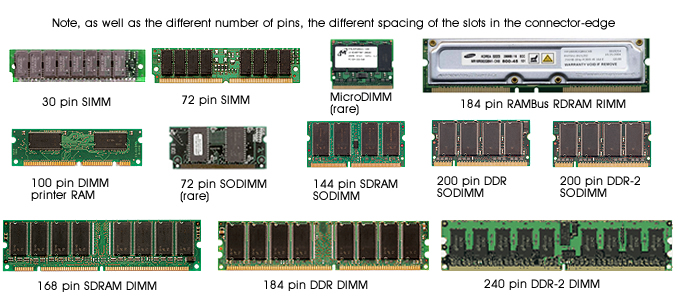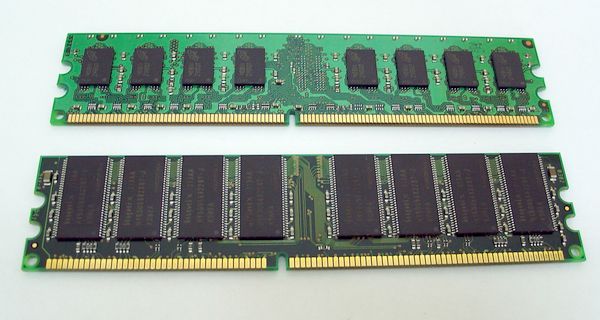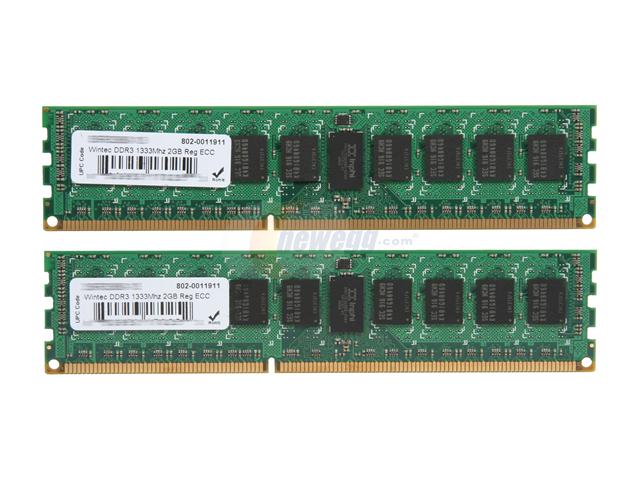Table of Contents
RAM
Registered vs. unregistered (unbuffered)
Memory modules can be built with additional support chips to buffer the flow of data on and off the module. This provides less load to the motherboard, increases reliability, and allows for the use of larger or more memory modules. There is sometimes a small speed penalty to this. Because of the added expense of the modules and the performance hit, the use of buffered or registered memory is confined mainly to servers and high end workstations (and some early Athlon 64 motherboards) If a machine requires registered memory (or unregistered memory) do not install RAM of the opposite type. Even if it supports both, never mix registered and unregistered modules in the same machine.
Unless specified otherwise, all standard RAM is Non-ECC, unbuffered and unregistered.
SDRAM
SDRAM memory modules have 168 pins and two notches (Wikipedia article).
DDR SDRAM
DDR memory modules have 184 pins and one notch (Wikipedia article).
- 100 MHz = DDR200 = PC1600 (64 bit * 2 * 100 MHz = 1600 MB/s)
- 133 MHz = DDR266 = PC2100 (64 bit * 2 * 133 MHz = 2133 MB/s)
- 166 MHz = DDR333 = PC2700 (64 bit * 2 * 166 MHz = 2666 MB/s)
- 200 MHz = DDR400 = PC3200 (64 bit * 2 * 200 MHz = 3200 MB/s)
DDR2 SDRAM
SDRAM modules have 240 pins and one notch. The notch on DDR2 DIMMs is in a different position than DDR DIMMs, and the pin density is slightly higher (Wikipedia article).
- 200 MHz = DDR2-400 = PC2-3200 (64 bit * 2 * 200 MHz = 3200 MB/s)
- 266 MHz = DDR2-533 = PC2-4200 (64 bit * 2 * 266 MHz = 4256 MB/s)
- 333 MHz = DDR2-667 = PC2-5300 (64 bit * 2 * 333 MHz = 5328 MB/s)
- 400 MHz = DDR2-800 = PC2-6400 (64 bit * 2 * 400 MHz = 6400 MB/s)




